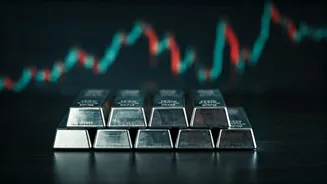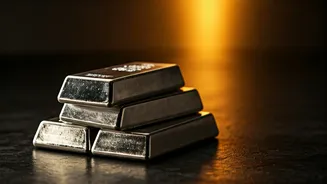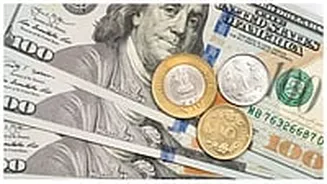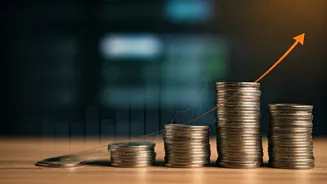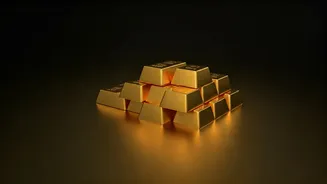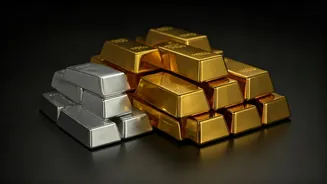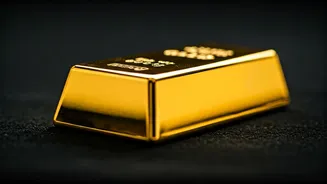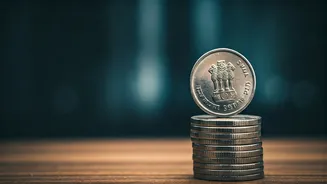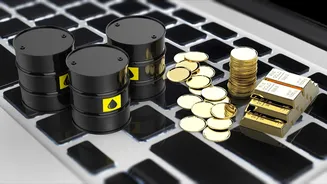Dhanteras: A Tradition
Dhanteras, which often kickstarts the Diwali festivities, is a very special time in India. Traditionally, people purchase precious metals like silver and
gold. It's considered incredibly auspicious to buy these items on this day, with silver often being a popular choice due to its affordability and the belief that it brings wealth and prosperity. This tradition dates back centuries, reflecting the cultural significance of Dhanteras and its connection to good fortune. The practice symbolizes welcoming Lakshmi, the goddess of wealth, into your home. Making a silver purchase during Dhanteras is not merely a transaction; it's a way of participating in a deep-rooted cultural ritual that connects people to their heritage and hopes for a prosperous future. The act itself is seen as a gesture of inviting prosperity and happiness.
Silver Investment Landscape
Considering the current economic situation is vital for making any investment decision. When assessing silver, look at the global economic conditions, including inflation rates, interest rates, and currency values. Inflation can often drive up the price of precious metals like silver, which are often seen as a hedge against inflation. Interest rate changes can also affect silver prices, as higher rates might increase the opportunity cost of holding non-yielding assets like silver. Examining currency trends, specifically the rupee's performance against the US dollar, is important. A weaker rupee can make imported silver more expensive, affecting local prices. Analyzing the supply and demand dynamics of silver in the market is equally important. Production levels, industrial demand, and investor interest play a significant role in determining silver prices. Understanding these economic indicators and market dynamics allows potential investors to estimate whether the time is right to purchase silver during Dhanteras.
Factors to Consider
Several factors should influence any decision to buy silver. Firstly, the purity of the silver is key. Silver's purity is often measured in fineness (e.g., 999 for 99.9% pure silver). Make sure to purchase silver from a reputable source that provides certificates of authenticity to ensure quality. Secondly, think about the form of silver to buy – coins, bars, or jewelry. Each has different advantages and drawbacks: coins are easily tradable, bars offer value based on weight, and jewelry may carry added costs for design and craftsmanship. Understanding your investment goals is crucial. Are you investing for the long term or looking for a quick profit? This influences the type of silver and the timing of your purchase. Assess the current market price and compare it with historical trends. You can often consult financial experts or market reports to understand price fluctuations and make an informed decision. Finally, evaluate the storage options available. Secure storage is vital to protect your silver from theft or damage, be it a bank locker or a home safe.
Expert Opinions & Trends
Experts in financial markets and commodities provide valuable perspectives on silver investments. Listen to market analysts and investment advisors for their projections on silver prices and market trends. Their insights often involve examining economic indicators, geopolitical events, and supply-demand dynamics that can influence silver's value. Stay updated on market trends to recognize patterns and make timely decisions. This includes monitoring the performance of silver compared to other investment options, such as gold, stocks, and bonds. Pay attention to how the demand from industrial sectors, such as electronics and solar panels, influences silver consumption. Industrial demand plays a significant role in determining overall silver demand and price. Understanding these perspectives and trends can inform your investment strategy and make your silver purchase more strategic during Dhanteras. Consider consulting with a financial advisor for personalized advice according to your particular investment goals and risk tolerance.
Risks and Rewards
Investing in silver, like any investment, involves both risks and rewards. The main risk is price volatility, which means the value of silver can fluctuate significantly in a short period. Factors such as economic uncertainty, changes in industrial demand, and investor sentiment can contribute to this volatility. However, silver can serve as a hedge against inflation. During inflationary periods, the price of silver may increase, potentially protecting your investment's value. Another risk to consider is the cost of storage and insurance, which are crucial for safeguarding your silver holdings. On the reward side, silver offers the potential for capital appreciation, especially during times of economic instability. It's a tangible asset that has intrinsic value, making it a reliable store of wealth. Silver is also used in various industrial applications, which can further drive demand. Make sure you fully grasp the risks and rewards before making an investment decision. Diversifying your portfolio and investing only what you can afford to lose are prudent steps. Consider both the upside potential and the potential downside before deciding to invest in silver.
